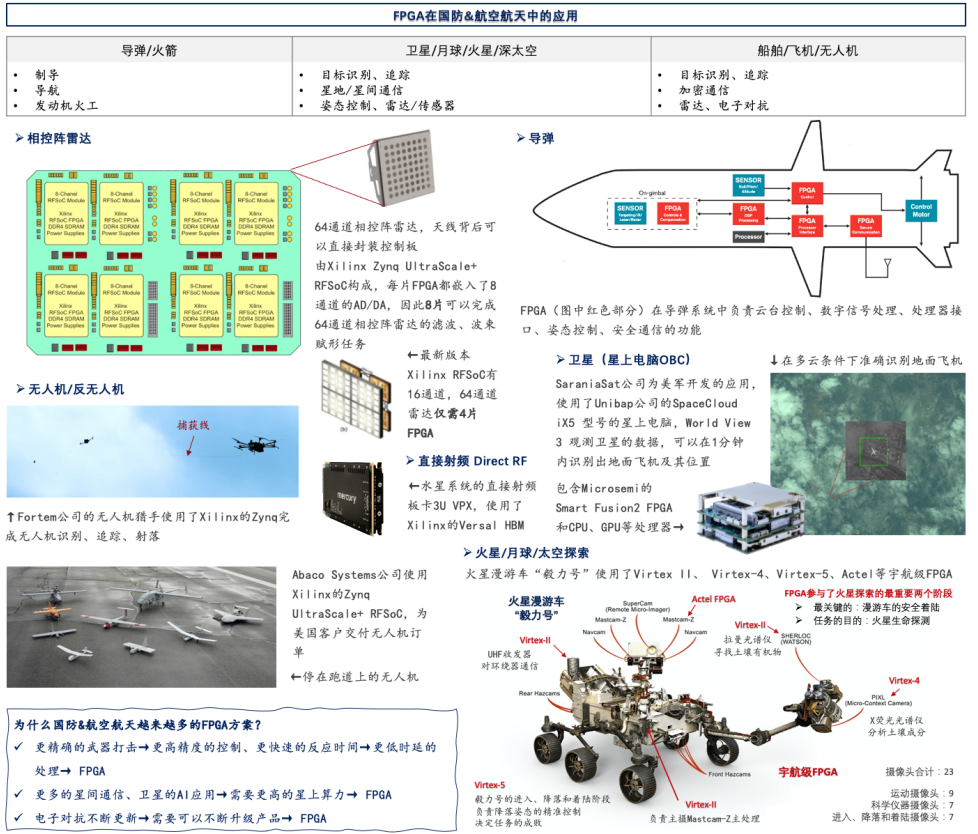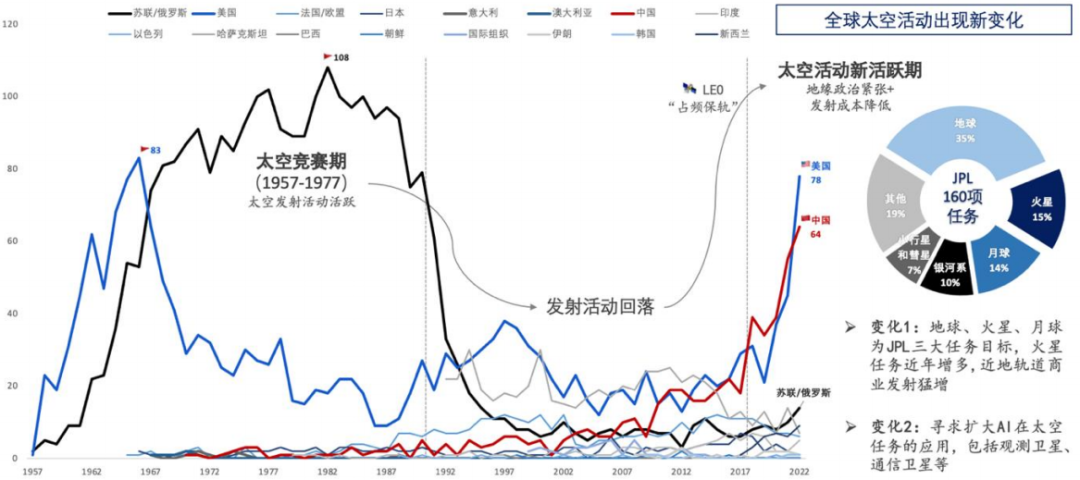
Click the “blue text” above to follow for more exciting content.
This article has a total of 908 words, and it takes about 3 minutes to read.
Defense & aerospace is the fourth largest application market for global FPGA chips, accounting for 13%, and it is also a rapidly growing market. As a key core component in military and aerospace fields, it is required to operate stably in extreme environments, with high anti-interference capability and security, serving as an important support for national strategic security.
FPGA has very common applications in defense and aerospace, with future growth mainly driven by the development of precision strike weapons and satellite communications.
In the defense sector, FPGA is mainly used in missiles and radars. For example, phased array radars often use Xilinx’s Zynq UltraScale RFSoC to complete radar beam steering; in missile electronic systems, FPGA is commonly used in critical modules for gimbal control, digital signal processing, external secure communication, and attitude control to achieve precise target strikes.
In the aerospace sector, FPGA is commonly used in civil aviation, drones/anti-drone systems, satellites, and Mars exploration projects. For instance, the on-board computer (OBC) of satellites equipped with FPGA transmits high spectral images back to Earth or processes observational data directly on the satellite to identify ground objects such as parked medium-sized aircraft. In drones, FPGA can be used for target recognition and external communication in critical systems, and in anti-drone devices, FPGA can also be used for electromagnetic interference/induction to drive or lure drones to land in safe areas.

Changes in the aerospace sector stem from a significant increase in satellite activities. In recent years, amid geopolitical tensions, the demand for countries to deploy their own communication satellite constellations and observation satellites has surged. In 2022 alone, the combined launch count of China and the United States accounted for 76% of global launches. With a large number of low-orbit satellite plans set to be completed in the next 4-5 years, space activities have entered a new active phase. In satellite electronic systems, the most notable change is the pursuit of expanding AI applications in space. For example, using AI target detection models on observation satellites to identify photos containing ground objects and transmit them back can save bandwidth for satellite-ground communication, which is already limited, and speed up ground processing. These large-scale image processing tasks have increased the demand for on-board computing power, particularly for FPGA, which is a high-parallel, high-reliability processor.

In summary:
The main application scenarios of FPGA in defense and aerospace and their reasons are as follows:
High parallel low-latency processing (guidance, engine pyrotechnics, target recognition, communication);
High reliability brought by dynamic reconfigurability (aerospace electronic systems).
Additionally, the growth drivers are:
More precise weapon strikes → higher precision control, faster response times → lower latency processing → increased FPGA penetration and value;
More inter-satellite communication and satellite AI applications → need for higher on-board computing power → increased FPGA penetration and value;
Continuous updates in electronic countermeasures → need for constant product upgrades → increased FPGA value.

Risk Warning:This content only represents the analysis, speculation, and judgment of the Breaking Research team. It is published here solely for the purpose of conveying information and should not be used as a basis for specific investment targets. Investment carries risks; please proceed with caution!Copyright Statement:This content is copyrighted by the original party or author. If reproduced, please indicate the source and author, retain the original title, and ensure the integrity of the article content, and bear legal responsibilities for copyright, etc.
END
